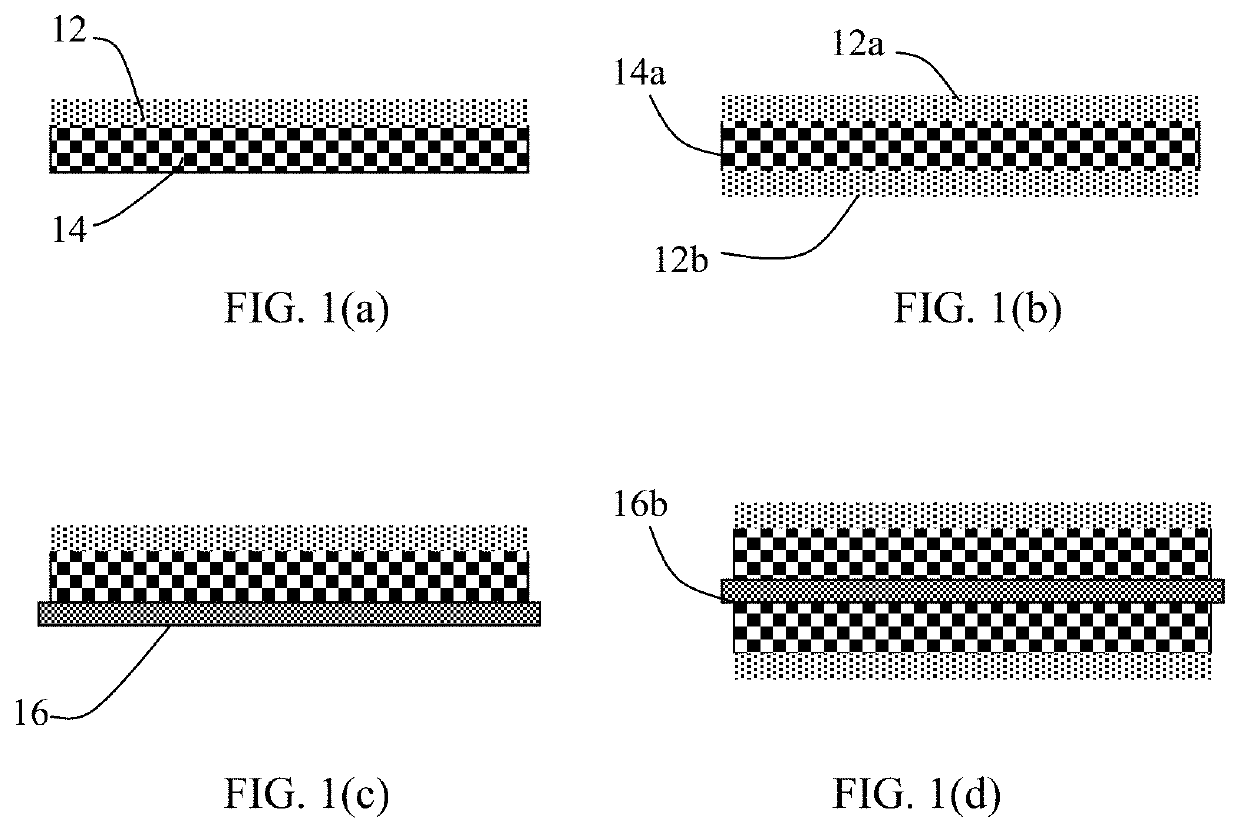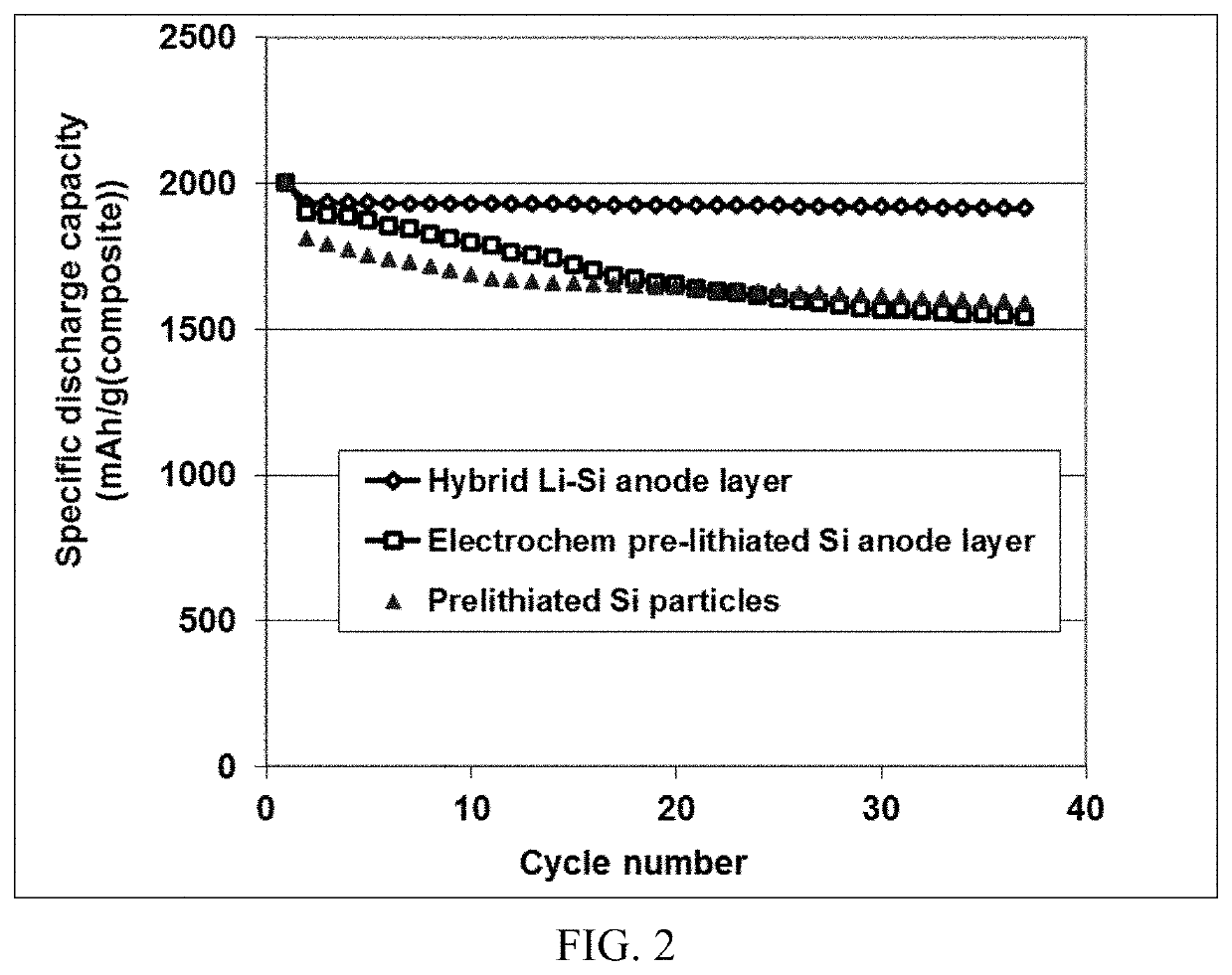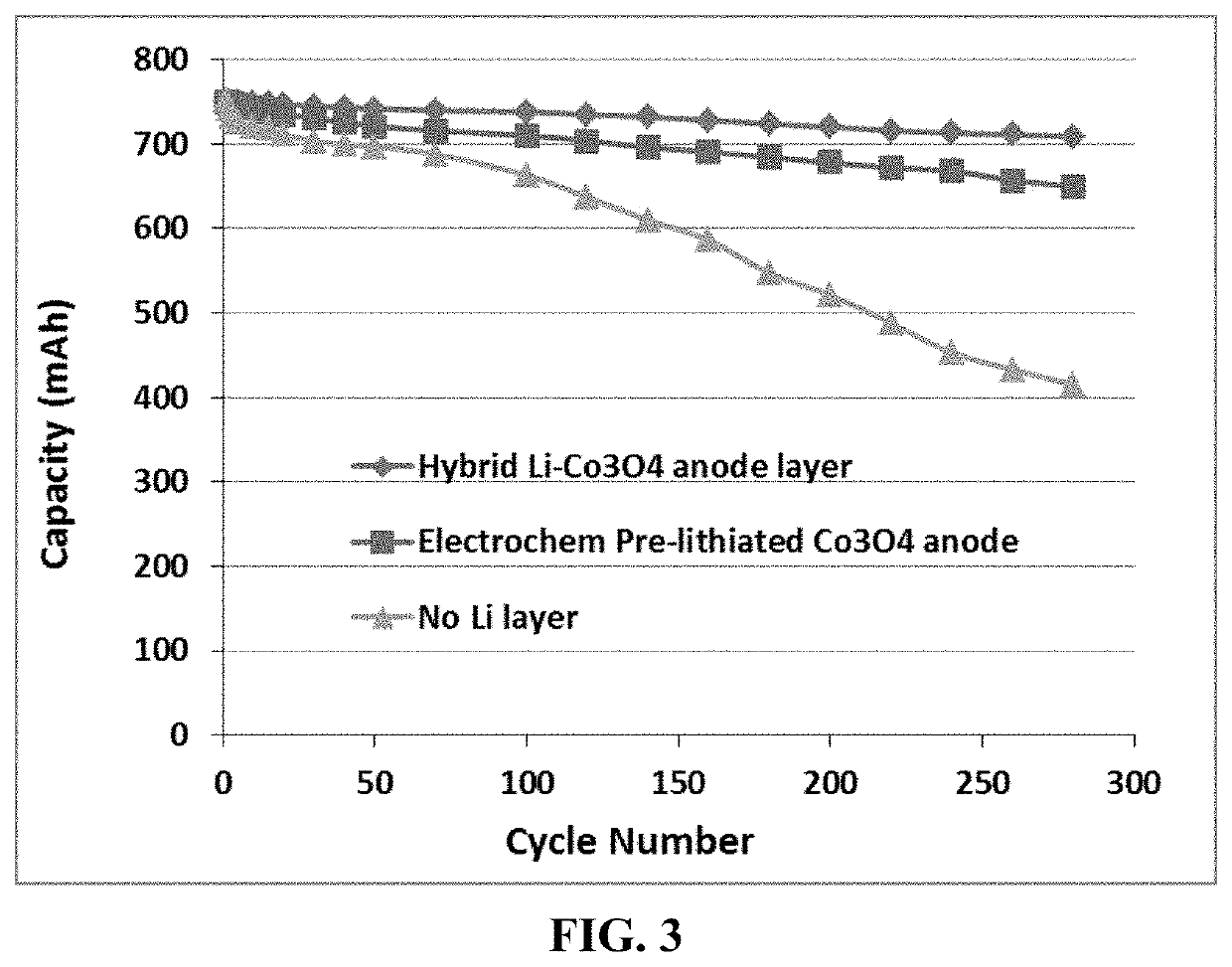Hybrid lithium anode electrode layer and lithium-ion battery containing same
- Summary
- Abstract
- Description
- Claims
- Application Information
AI Technical Summary
Benefits of technology
Problems solved by technology
Method used
Image
Examples
example 1
Anode Electrode Containing Amorphous Carbon-Protected Si Particles
[0124]Summarized in FIG. 2 are the results of a study that illustrates the impressive advantages of the presently invented anode technology. There are three types of lithium-ion cells that were prepared, all based on MoS2 as the cathode active material.
[0125]In the first cell (a control cell), the anode electrode was prepared by using slurry coating of prelithiated Si particles coated with amorphous carbon (13% after carbonization of phenolic resin) and bonded by PVDF (as the binder resin). The anode active material layer was coated on a Cu foil surface.
[0126]In the second cell (another control cell), the anode electrode was prepared by using slurry coating of Si particles coated with amorphous carbon (13% after carbonization of phenolic resin) and bonded by PVDF. Expanded graphite platelets were used as a conductive additive. After the anode active material layer was fabricated on a Cu foil surface, the layer was pre...
example 2
Anode Electrode Containing Co3O4 Particles
[0129]Three pouch cells were designed and prepared to deliver a cell capacity of approximately 750 mAh: the first cell featuring a presently invented hybrid lithium film-anode active material layer electrode, second one featuring a electrochemically pre-lithiated anode layer, and a third cell containing a conventional anode without an extra layer of lithium metal and without pre-lithiation of the anode layer. FIG. 3 shows that the presently invented lithium-ion cell featuring a hybrid anode electrode delivers the most stable charge / discharge cycling behavior.
example 3
Anode Electrode Containing Graphene-Encapsulated SnO2 Particles
[0130]Graphene-encapsulated SnO2 particles were supplied by Angstron Energy Co. (Dayton, Ohio). These particles, along with acetylene black (AB, as a conductive additive) and SBR (as a binder resin), were slurry-coated on a Cu foil surface to form two separate anode active material layers (50 μm thick). One such layer was deposited with a thin layer of lithium metal (1.5 μm thick), but the other layer without a lithium coating. The anode electrodes were then made into two cells each using lithium metal foil as a counter electrode. FIG. 4 shows the cycling behaviors of the two cells. These data again demonstrate the advantages of following the instant hybrid anode approach to preparing lithium-ion batteries. The instant cell exhibits significantly more stable charge / discharge behavior.
PUM
| Property | Measurement | Unit |
|---|---|---|
| size | aaaaa | aaaaa |
| particle size | aaaaa | aaaaa |
| particle size | aaaaa | aaaaa |
Abstract
Description
Claims
Application Information
 Login to View More
Login to View More - R&D
- Intellectual Property
- Life Sciences
- Materials
- Tech Scout
- Unparalleled Data Quality
- Higher Quality Content
- 60% Fewer Hallucinations
Browse by: Latest US Patents, China's latest patents, Technical Efficacy Thesaurus, Application Domain, Technology Topic, Popular Technical Reports.
© 2025 PatSnap. All rights reserved.Legal|Privacy policy|Modern Slavery Act Transparency Statement|Sitemap|About US| Contact US: help@patsnap.com



